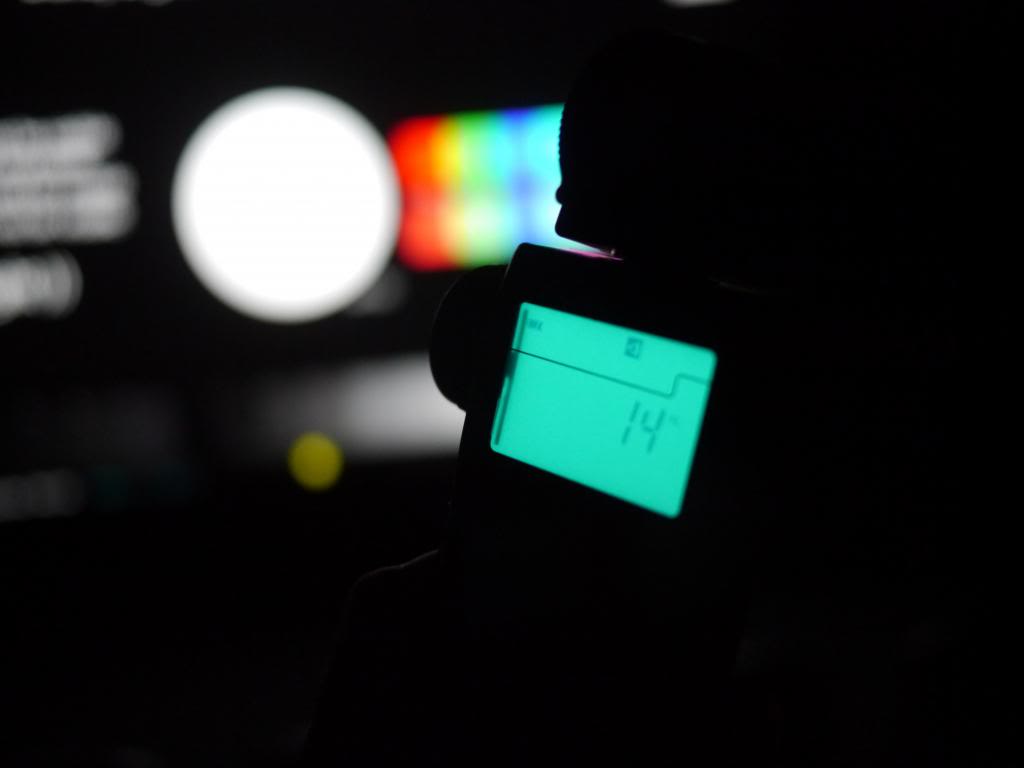RP-431-2:2011
The SMPTE RP 431-2:2011 digital cinema standard document describes the reference projector viewing environments used in DCI digital cinemas.
–SMPTE 431 Review room 14 fL, 100:1 Intra frame contrast, 1500:1 Sequential contrast
–SMPTE 431 Cinema Theatre 14 fL, 100:1 Intra frame contrast, 1200:1 Sequential contrast
Most cinemas will see an improvement in contrast ratio and light levels with an upgrade to RGB Laser projectors.
This improvement will be noticeable on the DCPs used today.
Rec 2020 color space
New digital RGB laser cinema projectors use red, green, and blue lasers as their light sources. They can (almost) reach the REC 2020 color space.
The RGB laser projectors also have a better contrast ratio and can reach higher light levels without ruining the black level.
The DCI-P3 color space and 1200:1 contrast ratio in SMPTE RP 431-2 are based on what you can achieve with a Xenon lamp projector.
REC2020 covers 99.9 percent of Pointer’s gamut, while DCI-P3 covers 91.4 percent.
This means that REC 2020 can do all the primary saturated colors, while DCI-P3 is more limited. DCI-P3 lacks the dark Cyan color that was possible with 35 mm film projection.
Cinemas are also limited to colors that can be achieved with 14 fL.
It would be difficult to use an automatic algorithm to map some of these colors to DCI-P3 without changing the artistic expression of the film.
The Alexa camera that is used on many films is compatible with REC2020
Dolby Vision and Imax Digital
You can watch RGB laser projection with (almost) REC 2020 color space and higher contrast ratios in Dolby Vision and IMAX Laser cinemas.
These cinemas can reach higher light levels and use bright colors that are not possible in ordinary cinemas.
Read a review of both here.
A LASER IMAX system demonstration used an intra frame contrast checkerboard test image to show the intra frame contrast of their dual LASER projectors. They said in the demonstration that they changed the furnishing and changed the screen to get a better contrast ratio.
Dual inventory of DCPs?
I think you can have two kinds of DCPs until all cinemas get RGB Laser or similar projectors:
RP 431-2:2011 DCPs for Xenon/UHP and Phosphor Laser projectors
and
RP 431-2:RGBLASER DCPs for RGB Laser projectors.
Dual inventory of DCPs is not a big problem.
DCP delivery services that use fast internet to distribute DCPs to cinemas send the 3D/2D DCPs to the 2D/3D cinemas and the 2D DCP to the 2D cinemas. In the future, if a venue has an RGB laser projector, it would be easy to send them the RGB laser DCP instead of the xenon DCP.
RP 431-2:RGB LASER REC 2020 could possibly use:
-REC 2020 color space,
-higher luminance
-and higher contrast ratio
inside the 12 bit 2.6 gamma X`Y`Z` JPEG 2000 250 Mbit encoding used in today’s DCPs.
Or use the SMPTE ST2084 EOTF standard to be able to use higher light levels.
Upgrading the light path
Changing screen and furnishing to get good intra frame contrast is essential to good projection.
I discussed this in this post:
SOME DIGITAL CINEMA PROJECTION BEST COMMON PRACTICES:

If the intra frame contrast is bad you could try to:
– Clean the port glass and optics.
– Avoid spill light from projection booth.
– Use matte black seats and furnishing.
– Install an iris in the projector.
– Upgrade to a laser projector.
Conclusion:
A new RGB Laser standard could keep today’s light levels and contrast ratios and just add REC2020 color space. Or the standard could go beyond today’s values. RGB Laser projectors could manage higher values. But in a dark viewing environment, higher luminance values can seem very bright.
The higher contrast ratio you could get with a laser projector could be ruined by reflective furnishing in the auditorium and other factors like old silver screens.
There should be a certification that cinemas could get to show that they are RP 431-2:2011(Xenon) or (future) RP 431-2:RGBLASER certified and have the correct intra frame contrast ratio and light levels.
Or they could get a certification that says they reach the correct light levels in 2D. (The cinemas should be able to reach these levels also when the lamp gets older.)
This way the public would know if the cinemas they visit have the correct light levels.
For the film makers here, we should mention that not every aspect of standardization or workflow transition smoothly from xenon or UHP mercury to RGB.
Metamerism and Color Fringing need to be ironed down and integrated within the standards.
There is a great presentation here about the subject:
http://www.kommer.com/20230616_Kommer_Kleijn_Laser_def.pdf
(Really appreciate the work you put in here. Kudos og tak.)